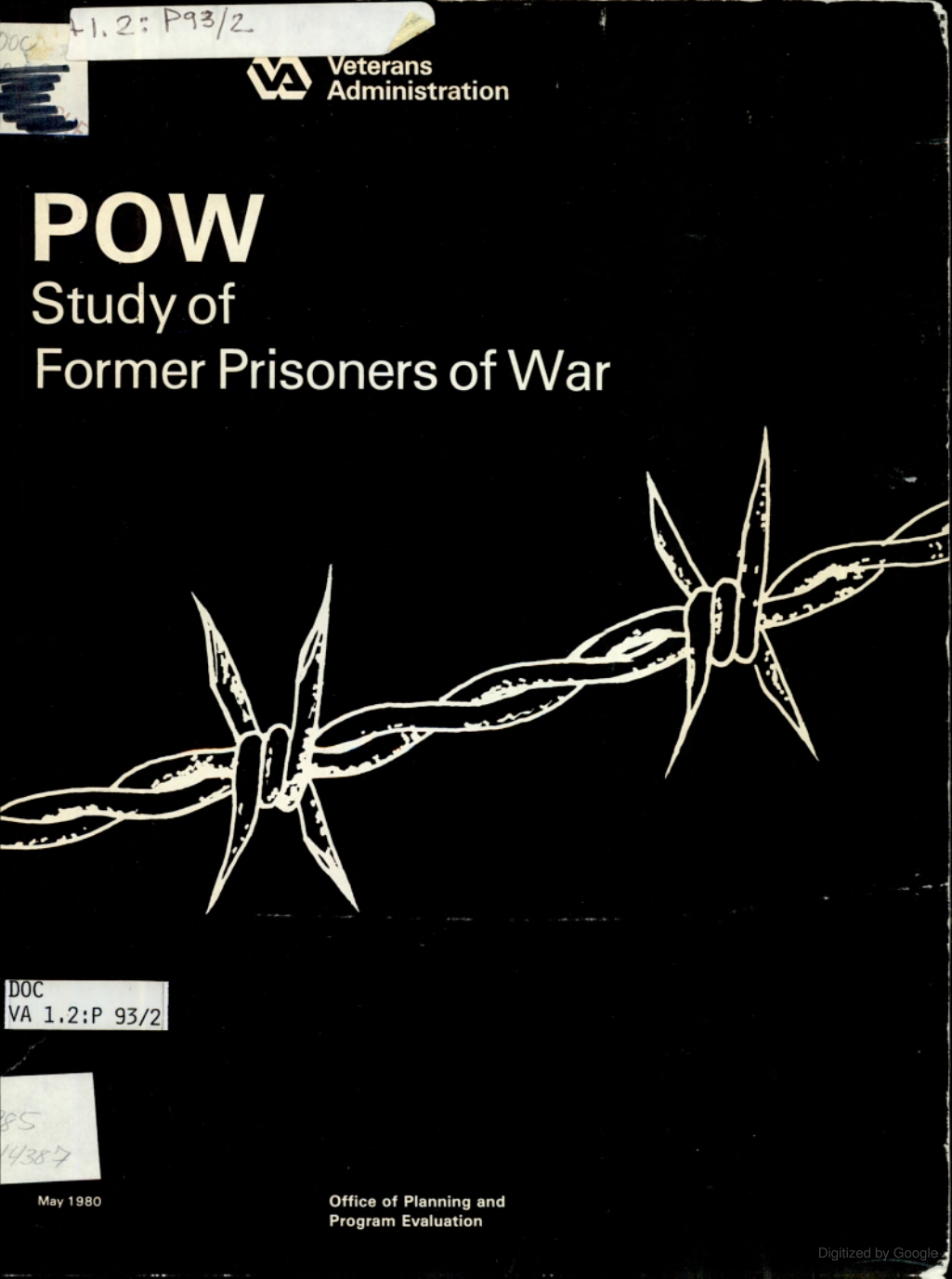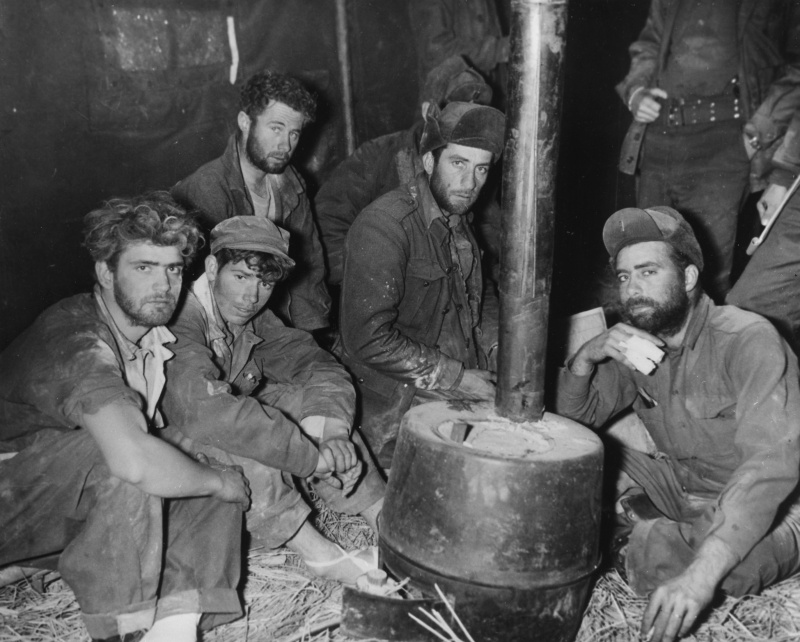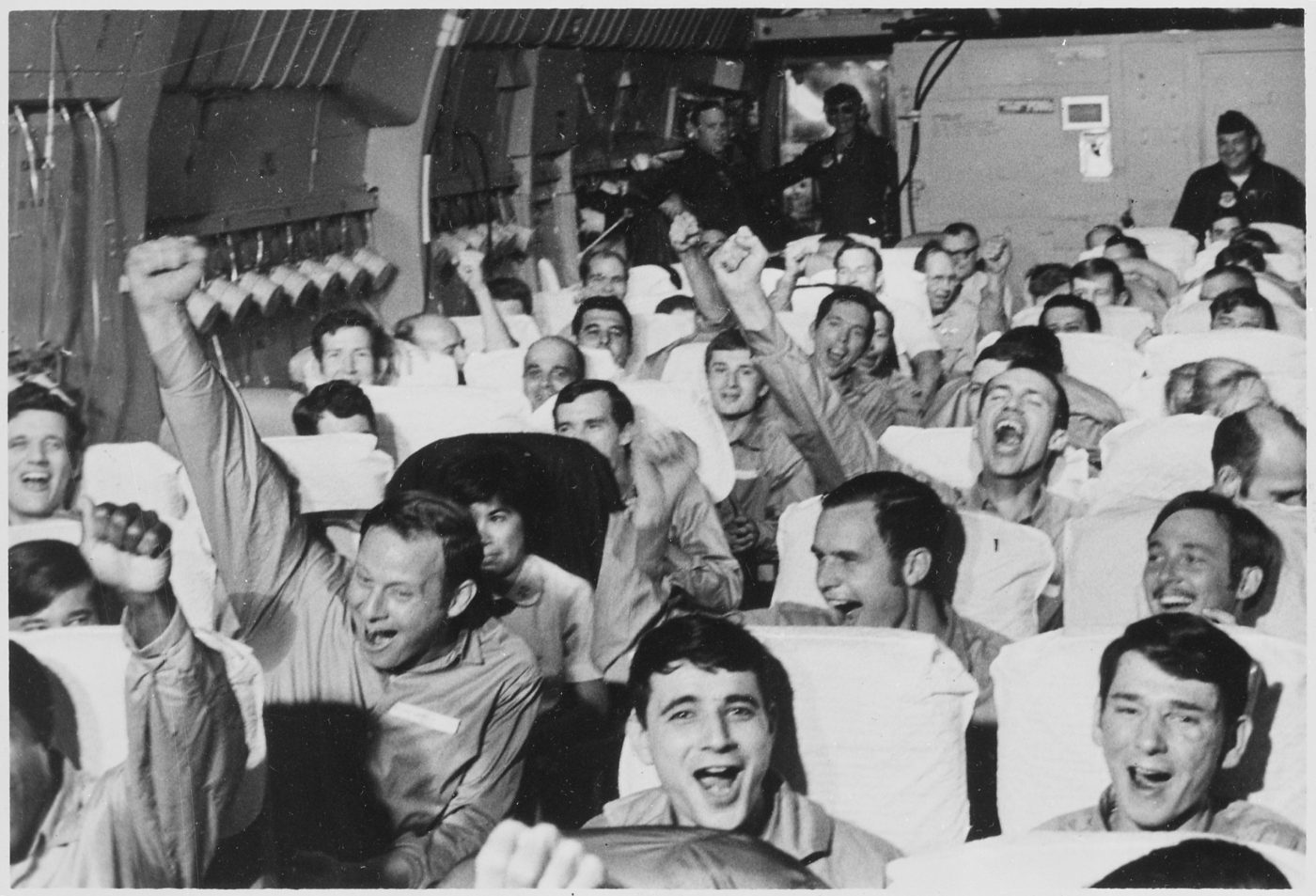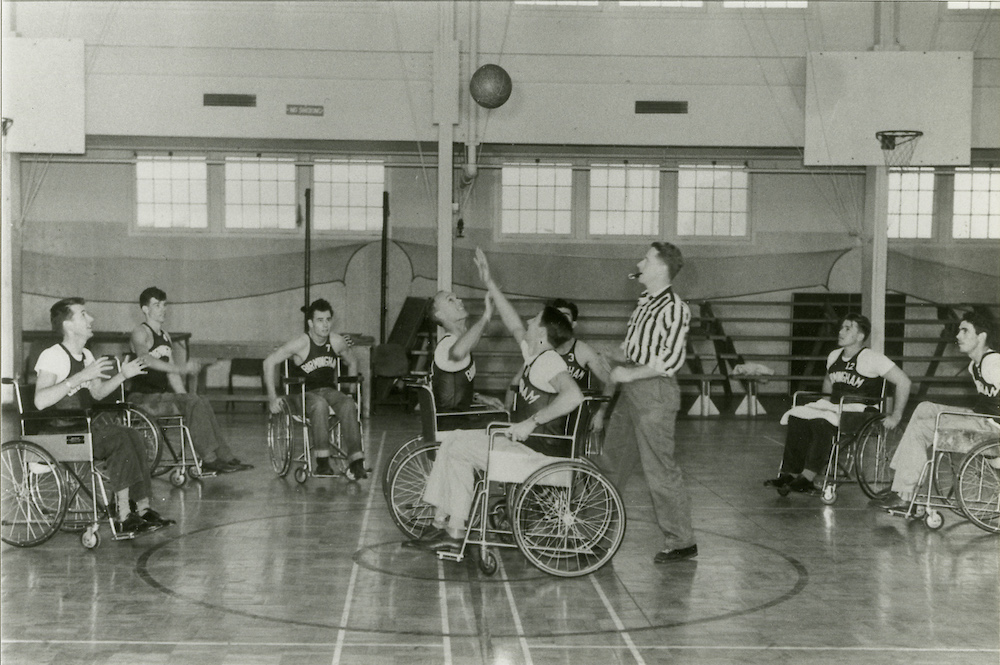
American service members taken prisoner in World War II, Korea, and Vietnam faced starvation, torture, forced labor, and other abuses at the hands of their captors. For those that returned home, their experiences in captivity often had long-lasting impacts on their physical and mental health. Over the decades, the U.S. government sought to address their specific needs through legislation conferring special benefits on former prisoners of war.
During World War II, just over 130,000 Americans were captured by the Germans and Japanese. Roughly 116,000 survived the ordeal and returned to the United States at the war’s end. In 1948, Congress passed the War Claims Act awarding reparations to former prisoners (or their families if deceased) in the amount of $1.00 per day of captivity. These lump-sum payments, taken from seized German and Japanese assets, were intended to compensate prisoners of war for the inadequate food they received while held in confinement. Four years later, Congress revised the act to allow former prisoners to collect an additional $1.50 a day in compensation for “inhumane treatment” or other violations of the 1929 Geneva Convention. By 1955, over $123 million had been dispersed to World War II Veterans as part of this program. The law was amended again in 1954 to include the 4,418 Americans who were taken prisoner during the Korean War and later repatriated. Just under $9 million of newly allocated funds were distributed to these Veterans by August 1956.

In addition to reparations, former prisoners also benefited from legislation passed many years after World War II and Korea that expanded their eligibility for disability compensation and medical care from VA. Government-funded studies in the 1950s concluded that soldiers taken prisoner in World War II were more likely to develop disabilities compared to others who served in the conflict. These studies led to several legislative proposals to give former prisoners preferential treatment when it came to determining benefits. However, no action was taken by lawmakers until near the end of the Vietnam War. In 1970, Congress established a presumption of service connection for seven kinds of diseases and disorders affecting Veterans held prisoner for six months or longer. The presumptive designation meant that these conditions were automatically assumed to be related to the Veteran’s time in captivity. The ailments covered by the law included avitaminosis, malnutrition, chronic dysentery, and other nutritional deficiencies. Former prisoners diagnosed with such diseases were entitled to disability compensation and treatment at VA hospitals regardless of how much time had elapsed since their separation from service. Psychosis was also included but the symptoms had to present themselves within two years of discharge. The 1970 act applied not only to former prisoners from World War II and Korea, but also to service members captured during the still ongoing war in Vietnam.

In 1978, five years after the United States withdrew the last of its combat troops from South Vietnam, Congress mandated VA carry out a thorough study of the disability and medical needs of former prisoners of war. In consultation with the Secretary of Defense, VA completed the study in 14 months and published its findings in early 1980. Like previous investigations in the 1950s, the study confirmed that former prisoners of war had higher rates of service-connected disabilities. Former prisoners from World War II were 4-5 times more likely to develop service-connected disabilities than other military personnel in the same war. For those imprisoned during the Korean War, the rate was 11 times higher. However, faulty medical exams after their release, especially for those imprisoned during World War II, made it difficult for former prisoners to prove that their disabilities did, indeed, stem from their time in captivity.
The study did more than shed light on the prevalence of disabilities among former prisoners. It also outlined a series of recommendations to redress the shortcomings in the law and VA policies. For example, the report proposed eliminating the two-year time limit on psychosis, arguing that this disorder should qualify for full treatment no matter when the symptoms appeared. The study further recommended that VA “adopt a standardized protocol for disability compensation exams for all former [prisoners]” and have these exams conducted or supervised by physicians with expertise in the medical problems of these Veterans. It also called on the agency to create an advisory committee to continue to evaluate the medical data and research on former prisoners and provide guidance to VA leadership and staff.

Several of these recommendations came to fruition a mere year after release of the study. On August 14, 1981, President Ronald W. Reagan signed into law the Former Prisoners of War Benefits Act, the first piece of legislation that focused exclusively on the needs of Veterans who were held captive in wartime. The act did adopt the study’s suggestion to remove the two-year presumptive period for psychosis. Another consequential change was the decision to extend presumptive benefits to Veterans imprisoned for as few as 30 days, as opposed to the minimum of six months required by the 1970 law. The new legislation also established the Advisory Committee on Former Prisoners of War per the study’s advice and granted former prisoners priority treatment at VA medical centers.
The 1981 law was not the last word on the subject. Continued research has led Congress to add to the list of presumptive conditions for former prisoners, further increasing their access to VA benefits and medical services.
By Jordan McIntire
Virtual Student Federal Service Intern, VA History Office, Department of Veterans Affairs
Share this story
Related Stories
History of VA in 100 Objects
In the 19th century, the federal government left the manufacture and distribution of prosthetic limbs for disabled Veterans to private enterprise. The experience of fighting two world wars in the first half of the 20th century led to a reversal in this policy.
In the interwar era, first the Veterans Bureau and then the Veterans Administration assumed responsibility for providing replacement limbs and medical care to Veterans.
In recent decades, another federal agency, the Defense Advanced Research Project Agency (DARPA), has joined VA as a supporter of cutting-edge research into artificial limb technology. DARPA’s efforts were spurred by the spike in traumatic injuries resulting from the emergence of improvised explosive devices as the insurgent’s weapon of choice in Iraq in 2003-04.
Out of that effort came the LUKE/DEKA prosthetic limb, named after the main character from "Star Wars."
History of VA in 100 Objects
In the waning days of World War I, French sailors from three visiting allied warships marched through New York in a Liberty Loan Parade. The timing was unfortunate as the second wave of the influenza pandemic was spreading in the U.S. By January, 25 of French sailors died from the virus.
These men were later buried at the Cypress Hills National Cemetery and later a 12-foot granite cross monument, the French Cross, was dedicated in 1920 on Armistice Day. This event later influenced changes to burial laws that opened up availability of allied service members and U.S. citizens who served in foreign armies in the war against Germany and Austrian empires.
History of VA in 100 Objects
Basketball is one of the most popular sports in the nation. However, for paraplegic Veterans after World War II it was impossible with the current equipment and wheelchairs at the time. While VA offered these Veterans a healthy dose of physical and occupational therapy as well as vocational training, patients craved something more. They wanted to return to the sports, like basketball, that they had grown up playing. Their wheelchairs, which were incredibly bulky and commonly weighed over 100 pounds limited play.
However, the revolutionary wheelchair design created in the late 1930s solved that problem. Their chairs featured lightweight aircraft tubing, rear wheels that were easy to propel, and front casters for pivoting. Weighing in at around 45 pounds, the sleek wheelchairs were ideal for sports, especially basketball with its smooth and flat playing surface. The mobility of paraplegic Veterans drastically increased as they mastered the use of the chair, and they soon began to roll themselves into VA hospital gyms to shoot baskets and play pickup games.






